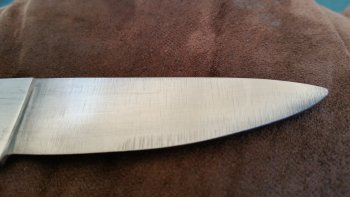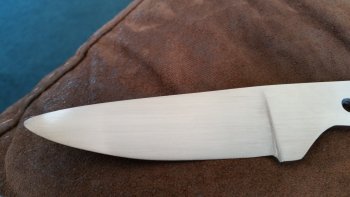Nick Riggi
Well-Known Member
I have been using a HF 1x30 and can produce decent blades- the problem is that with the small platen you can only grind the flats across the platen horizontally. Thus, all the lines go that way- so it leaves lots of hand sanding to get all of the lines vertical from hilt to tip. Any suggestions for me or a different method to reduce the time I spend hand sanding those horizontal ines out?


